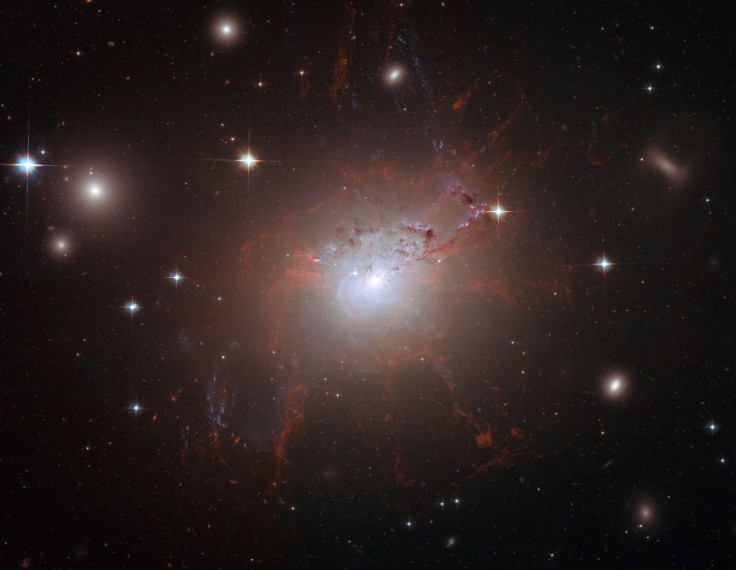NASA Captures Stunning Space 'Bubble' Remnant Of Supernova In Large Magellanic Cloud [PHOTO]

NASA has brought back a stunning image of a space "bubble" that was left behind by a supernova to celebrate Pi Day.
On its official Twitter page, the space agency shared an image of a colorful supernova remnant, which was given the designation SNR 0509-67.5. Captured by the NASA/ESA Hubble Space Telescope and the Chandra X-ray Observatory, the bubble-shaped shroud of gas is floating in one of the Milky Way's neighboring galaxies, the Large Magellanic Cloud, which is located around 160,000 light-years away.
SNR 0509-67.5 is a remnant of a Type 1a supernova that exploded almost 400 years ago. The "bubble" is 23 light-years across and continues to expand at a rate of over 11 million miles per hour (5,000 kilometers per second), according to the Chandra observatory website.
"Pi represents the ratio between the circumference and diameter of a circle — like in this supernova remnant "bubble" captured by @chandraxray and @NASAHubble," NASA posted on Thursday to celebrate #PiDay.
Happy #PiDay!
— NASA Marshall (@NASA_Marshall) March 14, 2019
Pi represents the ratio between the circumference and diameter of a circle — like in this supernova remnant "bubble" captured by @chandraxray and @NASAHubble. Learn more >> https://t.co/gkCEwJPwp8 pic.twitter.com/UDWpJ52g4S
The colorful image of the supernova remnant was created by compositing data from the Hubble telescope and Chandra, two of NASA's great observatories. The Hubble telescope provided optical data of SNR 0509-67.5 and its accompanying star field, and this was combined with X-ray energies obtained by the Chandra.
In the resulting image, the Chandra data, which appears as blue and green, shows "material in the center of the supernova remnant that has been heated to millions of degrees." This is surrounded by a glowing pink optical shell, which shows the "ambient gas being shocked by the expanding blast wave" from the exploding star. The pink shell also shows ripples that are consistent with the brighter areas of the X-ray data.
Meanwhile, NASA also recently shared an image of another "bubble" in space, though this one is much, much larger. The Hubble telescope and Chandra captured "superbubbles" that stretch out from opposite sides of the center of the galaxy NGC 3079. The smaller superbubble is about 3,600 light-years across, while the larger one is 4,900 light-years in diameter.
Like the supernova remnant, this stunning image was also made by combining data from the Hubble telescope and Chandra.
What’s better than bubbles? Superbubbles in space! @chandraxray data combines w/ @NASAHubble optical data to reveal a pair of balloon-like regions in a galaxy 67 million light yrs from Earth. Learn about superbubbles' possible connection to cosmic rays: https://t.co/ZrZD34SiZw pic.twitter.com/mOwzchlG6F
— NASA (@NASA) March 2, 2019
A study led by Jiangtao Li of the University of Michigan revealed that a cosmic particle accelerator within NGC 3079 is the source of ultra-energetic particles found in the rims of the superbubbles. According to the research published in The Astrophysical Journal, the particles are believed to be more energetic than the ones produced by Europe's Large Hadron Collider (LHC), the world's most powerful artificial particle accelerator.
© Copyright IBTimes 2024. All rights reserved.





















